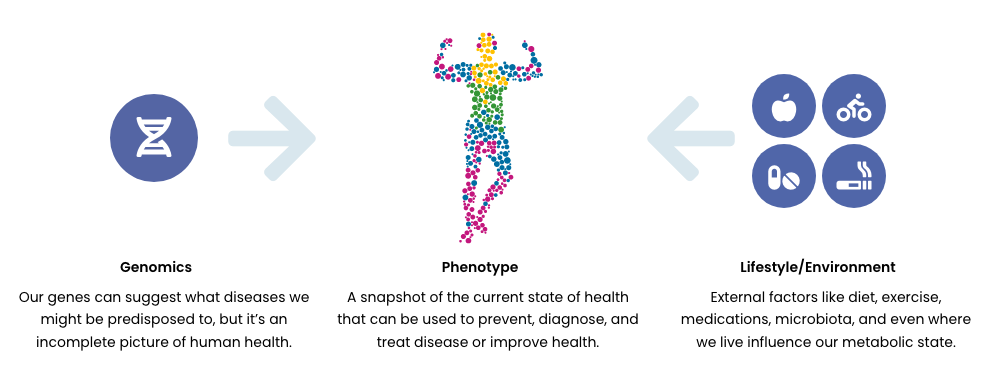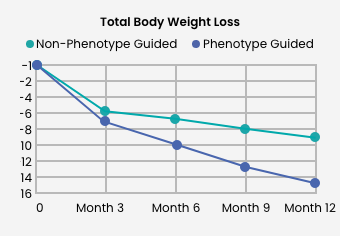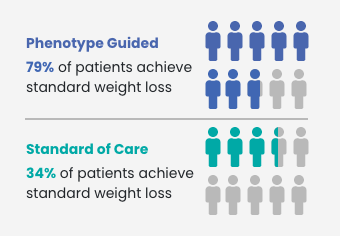Why do phenotypes matter for weight loss?
What are phenotypes - A phenotype is an individual's observable traits, such as height, eye color, hair color, weight and blood type. The genetic code that contributes to the phenotype is called the genotype. Some traits are largely determined by the genotype, while other traits are largely determined by environmental factors. Some traits include variations embedded in the genetic code which can predispose certain individuals to higher risk of disease development, such as obesity


Unique Interventions
The effectiveness of an interventions is an unique as you are and the MyhenomeTM test aims to get you on the right treatment the first time.

2x more weight loss
As demonstrated in a clinical study at Mayo clinic, phenotype guided weight loss interventions have been shown to increase the number of patients who achieve meaningful weight loss( losing >10% total body weight).

Clinically validated weight loss
Only 1/3 of patients who recieve standard weight loss treatments get to 10% total body weight loss on average. Phenotype driven interventions have been shown to help almost 80% of patients achieve greater than 10% total body weight loss.
What is obesity phenotyping?
Phenotyping classifies your type of obesity based on specific biological mechanisms. Understanding which of the four phenotypes you have pinpoints what is driving your weight gain and limiting your ability to lose weight. Using weight-loss solutions specific to your phenotype and genetic makeup can double your weight loss compared to conventional methods.